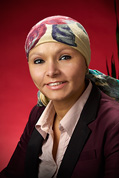ARCHIVED: NOT AVAILABLE FOR CREDIT
Paroxysmal Nocturnal Hemoglobinuria: Rare But Real
Paroxysmal Nocturnal Hemoglobinuria (PNH) is a rare disorder with progressive morbidities and mortalities. It is a life threatening disease that causes thrombosis, end organ damage, and impaired quality of life and demands early diagnosis and intervention. The International Clinical Cytometry Society (ICCS) Guidelines and International PNH Interest Group (IPIG) recommend evaluation of high risk patients. Identifying and screening of high risk patients is essential for the diagnosis, management and monitoring of PNH.
Originally published on September 5, 2017
Lecture Presenter
 | Nahla Heikal, MD, MS Assistant Professor of Pathology |
Dr. Heikal is an assistant professor at the University of Utah School of Medicine. She received her MD from Ain Shams University School of Medicine in Cairo and a master’s degree in clinical and chemical pathology from the Cairo University School of Medicine. Dr. Heikal completed a clinical immunology fellowship and a clinical pathology residency at the University of Utah School of Medicine and holds American Board of Pathology board certification in clinical pathology, as well as a New York State Department of Health certification in diagnostic immunology, hematology, and transplant monitoring. She is a fellow of the College of American Pathologists, and a member of the American Society of Clinical Pathology, Association of Medical Laboratory Immunologists, International Society on Thrombosis and Hemostasis, and the International Society of Laboratory Hematology.
Objectives
After this presentation, participants will be able to:
- Discus symptoms and complications of PNH
- Discuss pathophysiology of PNH
- Identify clinical categories of PNH
- Identify high risk patients
- Discuss laboratory diagnosis for PNH
- Overview of management of PNH
Sponsored by:
University of Utah School of Medicine, Department of Pathology, and ARUP Laboratories
 Site Search
Site Search

